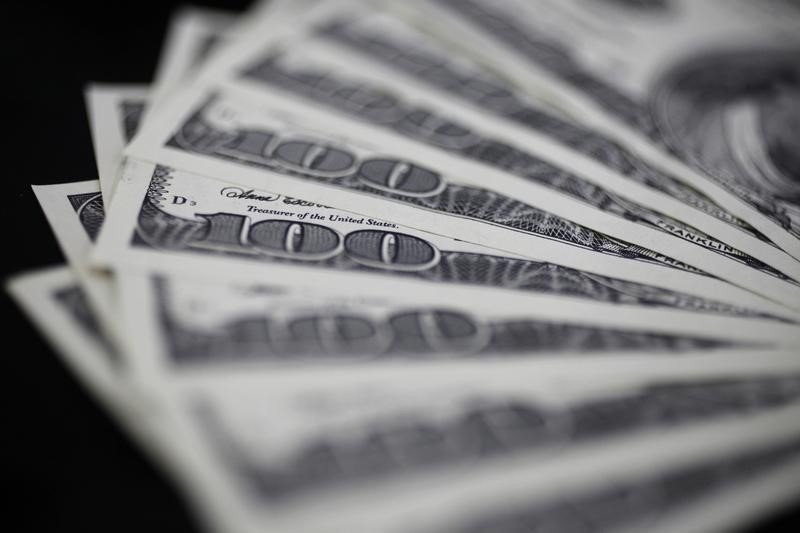Investing.com - The dollar was broadly higher against a basket of other major currencies on Tuesday, as investors eyed the release of U.S. economic reports later in the day and as recent upbeat U.S. data continued to support demand for the greenback.
The dollar found support after the U.S. Census Bureau said on Monday that factory orders rose 2.1% in March, just above expectations for a gain of 2.0%.
The data came after the Institute for Supply Management reported on Friday that activity in the manufacturing sector was stable in April, while another report showed that U.S. consumer sentiment rose in April to its highest level since January.
The reports fuelled optimism that the U.S. economy has turned a corner after a recent soft patch.
The U.S. dollar index, which measures the greenback’s strength against a trade-weighted basket of six major currencies, was up 0.18% to 95.77.
EUR/USD slid 0.24% to 1.1119.
Markets shrugged off data earlier showing that the number of unemployed people in Spain declined by 118,900 in April, compared to expectations for a 64,800 fall, after a drop of 60,200 the previous month.
The pound held steady, with GBP/USD at 1.5115.
Sterling showed little reaction to a report by market research firm Markit and the Chartered Institute of Purchasing & Supply showing that their U.K. construction purchasing managers' index declined to an almost 22-month low of 54.2 last month from a reading of 57.8 in March.
Economists had expected the index to tick down to 57.5 in April.
Elsewhere, the dollar was higher against the yen and the Swiss franc, with USD/JPY edging up 0.14% to 102.30 and with USD/CHF adding 0.10% to 0.9345.
The Australian dollar was stronger, with AUD/USD up 0.43% to 0.7870 after the Reserve Bank of Australia lowered its benchmark interest rate by 0.25% from 2.25% to a record-low 2.00%, in a widely expected move.
RBA Governor Glenn Stevens said the decision came despite some "improved trends in household demand over the past six months and stronger growth in employment" and cited some ongoing weakness in business capital expenditure and public spending.
Separately, the Australian Bureau of Statistics said that the country's trade deficit narrowed to A$1.32 billion this month from A$1.61 billion in April, whose figure was revised from a previously estimated deficit of A$1.26 billon.
Analysts had expected the trade deficit to narrow to A$1.00 billion in May.
Meanwhile, NZD/USD declined 0.48% to 0.7501 and USD/CAD held steady at 1.2091.
Later in the day, the U.S. was to release data on construction sector activity and the trade balance, while the Institute of Supply Management was to release a report on U.S. service sector activity.
